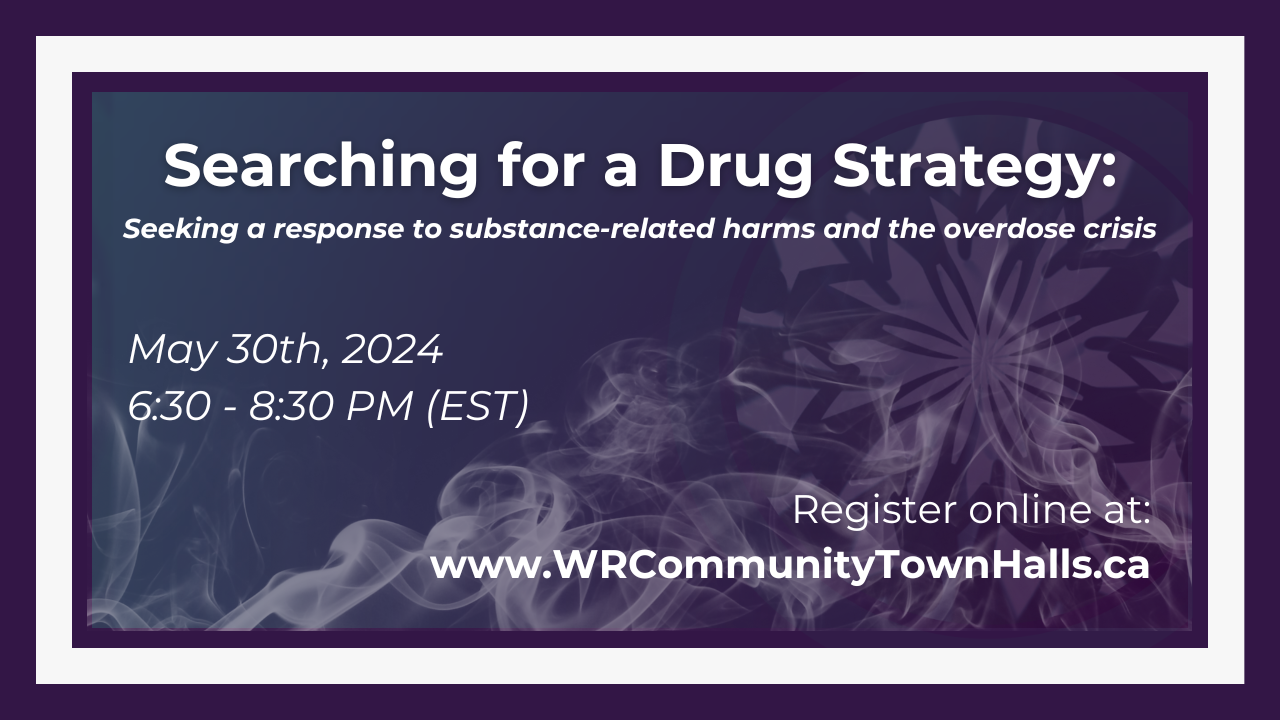Shaleesa Ledlie
PhD Candidate, Leslie Dan Faculty of Pharmacy, University of Toronto
|
Shaleesa is a PhD Candidate in Pharmaceutical Sciences at the University of Toronto Leslie Dan Faculty of Pharmacy. She previously completed her Master of Public Health within the Division of Epidemiology at the Dalla Lana School of Public Health. Shaleesa’s primary research interests include pharmacoepidemiologic research methods as well as drug safety, utilization, and policy. Her research focuses on understanding how various pathways of care impact health outcomes among people with opioid use disorder.
|
|
On May 30, 2024, a town hall meeting was held to address the escalating opioid crisis and discuss comprehensive strategies involving prevention, treatment, harm reduction, and enforcement. The event featured several distinguished speakers who provided insights based on their expertise and experiences in various aspects of drug policy and public health.
Shaleesa Ledlie presented data on the opioid toxicity crisis in Ontario, highlighting the dramatic increase in opioid-related deaths over the past decade. She discussed the role of the COVID-19 pandemic in exacerbating the crisis and the shift towards fentanyl and its analogues in the drug supply. Ledlie emphasized the need for a multifaceted response tailored to the diverse needs of different demographic groups and regions. This town hall underscored the complexity of the opioid crisis and the necessity of a multifaceted approach involving prevention, harm reduction, treatment, and enforcement. The speakers collectively advocated for evidence-based strategies, comprehensive care, and collaborative efforts to effectively address the crisis and support affected individuals and communities. |
All Featured Speakers: |
Presentation
|
|
View Presentation Slides
|
|
From Pandemic to Epidemic
- Significant Increase in Deaths: Opioid-related deaths in Ontario increased from 550 in 2010 to over 2,800 in 2021, with the pandemic exacerbating the situation.
- Fentanyl's Role: Fentanyl and its analogues were involved in 86% of opioid-related deaths in early 2023, a substantial rise from 2017-2018, with polysubstance use being a common factor.
- Impact on Youth and Changing Drug Use Trends: The crisis disproportionately affects younger adults, with a significant shift towards inhalation methods over injection.
Shaleesa Ledlie presents a detailed analysis of the opioid toxicity crisis in Ontario, tracing its alarming increase over the past decade. In 2010, Ontario recorded approximately 550 opioid-related deaths, but this number surged to over 2,800 by 2021. The COVID-19 pandemic significantly exacerbated the crisis due to factors such as an unpredictable drug supply, border closures, lockdowns, reduced access to community-based programs, and increased anxiety and loneliness. The first year of the pandemic saw a 79% increase in monthly opioid-related deaths, a rate that has not returned to pre-pandemic levels.
A crucial element in this crisis is the shift towards fentanyl and its analogues in the unregulated drug supply, starting around 2015. By 2021, fentanyl was involved in about one in every 27 deaths among people under 85 in Ontario. Among younger adults in their 20s and 30s, this statistic is even more alarming, with one in every three deaths being opioid-related. Early 2023 data shows that fentanyl was involved in 86% of opioid-related deaths, up from around 70% in 2017-2018. Only 10% of these deaths involved prescription opioids, while 65% involved stimulants and benzodiazepines, indicating prevalent polysubstance use. The combination of fentanyl and sedatives complicates overdose responses, increasing the likelihood of fatal outcomes.
Shaleesa also notes that over half of opioid-related deaths occurred from inhalation rather than injection, reflecting changing drug use trends. Many deaths happened without anyone present to administer naloxone or perform resuscitation. The crisis increasingly affects younger populations, with 170 deaths among those under 25 in the first year of the pandemic. Shaleesa emphasizes the need for a multi-pronged response to the crisis, tailored to meet the diverse needs of different demographic groups and regions across Ontario.
A crucial element in this crisis is the shift towards fentanyl and its analogues in the unregulated drug supply, starting around 2015. By 2021, fentanyl was involved in about one in every 27 deaths among people under 85 in Ontario. Among younger adults in their 20s and 30s, this statistic is even more alarming, with one in every three deaths being opioid-related. Early 2023 data shows that fentanyl was involved in 86% of opioid-related deaths, up from around 70% in 2017-2018. Only 10% of these deaths involved prescription opioids, while 65% involved stimulants and benzodiazepines, indicating prevalent polysubstance use. The combination of fentanyl and sedatives complicates overdose responses, increasing the likelihood of fatal outcomes.
Shaleesa also notes that over half of opioid-related deaths occurred from inhalation rather than injection, reflecting changing drug use trends. Many deaths happened without anyone present to administer naloxone or perform resuscitation. The crisis increasingly affects younger populations, with 170 deaths among those under 25 in the first year of the pandemic. Shaleesa emphasizes the need for a multi-pronged response to the crisis, tailored to meet the diverse needs of different demographic groups and regions across Ontario.



